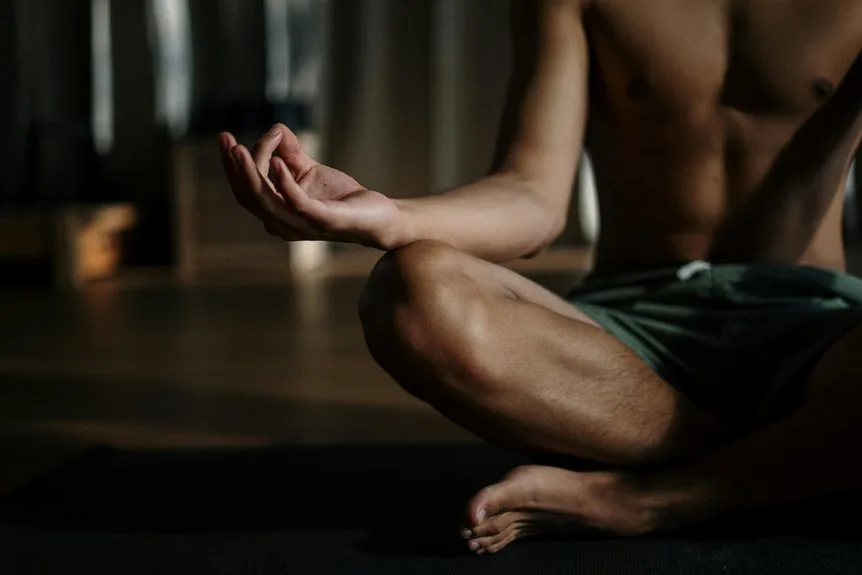Many people find their days slipping by in a blur, barely noticing the simple moments that make up daily life. Mindfulness offers a way to slow down and reconnect, even for beginners. Small habits, like taking a mindful breath in the morning or truly savoring a meal, can make a big difference. Curious how other everyday routines—like commuting or working out—can become gateways to more awareness and calm? Let’s examine a few practical ideas.
Mindful Wakeup: Start Your Day With Purpose
A mindful wakeup is more than just rolling out of bed and reaching for the phone; it’s about starting the morning with intention and a sense of purpose.
Instead of rushing, one can practice mindfulness by sitting comfortably, closing their eyes, and tuning in to body sensations. Taking three deep breaths, they center themselves, connecting with the present moment.
Reflecting on intentions, like how to show up with compassion or positivity, adds meaning to the morning routine. This simple meditation brings awareness and a gentle sense of belonging, helping the day begin with purpose—before the outside world calls for attention.
For those interested in enhancing their mindfulness journey, visiting a place like the Stanford Inn Resort can offer additional wellness services, such as Massage in the Forest or private yoga sessions, to deepen one’s practice.
Mindful Eating: Savor Every Bite
Mindful eating turns a regular meal into a whole new experience, inviting people to slow down and truly notice what’s on their plate. With mindful eating, the focus shifts to sensory awareness—deep breaths before each bite help ground the mind, while tuning into physical sensations and hunger cues guides decisions.
Savor every bite by appreciating flavors, textures, and aromas, making every eating experience richer and more connected. Notice hunger cues and eat based on mindful awareness, not just out of habit. Savor flavors, smells, and textures for a satisfying eating experience. Slow down, taking deep breaths to appreciate every moment. For those looking to deepen their mindfulness journey, one might consider exploring a personalized wellbeing journey at Sensei Porcupine Creek, where trained professionals can guide you in enhancing your mindfulness practices.
Mindful Pause: Shift From Autopilot to Awareness
Ever wonder why certain days seem to slip by on autopilot, with routines taking over and reactions happening almost before a thought can form? The mindful pause offers a gentle reset. By intentionally stopping automatic behaviors, people invite conscious awareness into ordinary moments.
Deliberate pauses, prompted by sticky notes or simple cues, help prevent reactive responses and enhance decision-making. Over time, practicing mindful pauses rewires neural pathways, making thoughtful choices feel more natural.
This simple act strengthens emotional regulation and supports stress reduction, creating a sense of connection and belonging. Just a few mindful pauses each day can make life feel more intentional. To further enrich your mindful practice, consider exploring serene outdoor environments like the heated pool at Hotel Indigo Napa Valley, where you can relax and reflect amidst tranquil surroundings.
Mindful Workout: Move With Intention
Just as pausing during a busy day can refresh the mind, moving with intention during exercise brings a new level of awareness to physical activity.
A mindful workout means tuning in to physical sensations, breath coordination, and the present moment with every movement. This approach isn’t only about fitness; it’s about body awareness and emotional balance.
To make movement more mindful, try:
- Focusing on how muscles feel as you move
- Pausing to notice your breath and heartbeat
- Setting a purpose for your workout (like stress relief)
These small mindfulness exercises help regulate the nervous system and deepen one’s sense of belonging. Adding relaxation techniques, such as those found at Cuyama Buckhorn, can enhance the overall mindful experience, providing both physical and mental rejuvenation.
Mindful Driving: Find Calm Behind the Wheel
There’s something about being behind the wheel that can turn even the calmest person into a bundle of nerves, especially when traffic is crawling or someone cuts in without signaling. Mindful driving offers a way to find calm behind the wheel.
Practicing breathing meditation during traffic jams supports stress reduction and emotional regulation. Focusing attention on sensory cues—like the hum of the engine or the grip of the steering wheel—anchors present-moment focus.
Compassionate awareness for oneself and other drivers helps shift frustration into patience. Mindful reflection on emotional responses can turn every drive into a shared, grounding mindfulness practice.
Frequently Asked Questions
How to Start a Daily Mindfulness Practice for Beginners?
Establishing a daily mindfulness practice involves setting a consistent time, exploring mindful breathing, body scan, gratitude journaling, mindful walking, sensory awareness, loving kindness, mindful eating, breath focus, maintaining meditation posture, and daily reflection to promote connection and presence.
How Do I Start My Day With Mindfulness?
When considering how to start the day with mindfulness, one might examine mindful breathing, morning meditation, gratitude journaling, sensory awareness, mindful walking, body scan, focused attention, positive affirmations, mindful stretching, and appreciation of ambient sounds for collective well-being.
What Are the 3 C’s of Mindfulness?
Research shows mindfulness reduces stress by up to 30%. The 3 C’s—Calm, Curiosity, and Compassion—enhance conscious breathing, present awareness, mindful observation, sensory focus, emotional regulation, mental clarity, gratitude practice, body scan, and mindful listening.
How to Do Mindfulness Every Day?
To practice mindfulness daily, individuals can use breathing techniques, mindful walking, or a body scan. Incorporating gratitude journaling, sensory awareness, mindful eating, meditation apps, breath awareness, mindful pauses, and emotional grounding promotes a sense of connection and community.
Final Thoughts
By weaving these five simple mindfulness practices into daily life, even beginners can notice real changes in their mood, focus, and stress levels. Remarkably, research shows that just ten minutes of mindfulness a day can reduce stress by up to 30%, making it a powerful tool for anyone. It doesn’t require perfection—just a bit of curiosity and practice. So, why not give your mind a mini-vacation each day and see how much brighter things feel?







